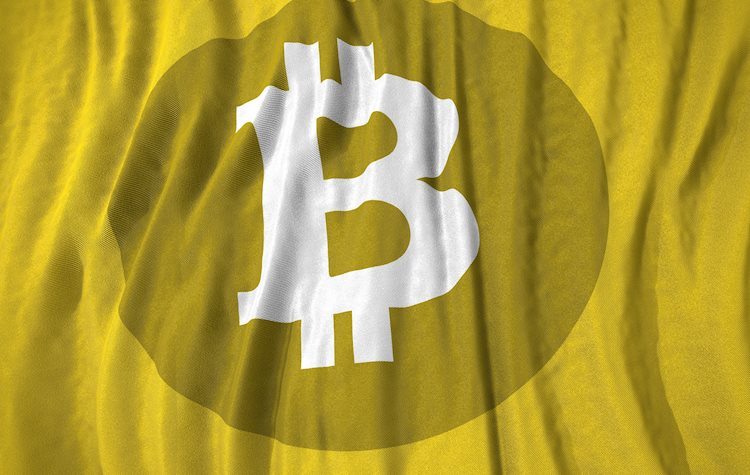Ahead of Hong Kong’s spot BTC and ETH ETFs going live on Tuesday, Australia could approve the spot BTC ETF in 2024.
Wednesday’s FOMC is likely causing crypto markets to correct before it with a bit of hope for incoming rate cuts.
Bitcoin (BTC) price is the focus of retail as well as institutional traders on Monday, as the market is off to an eventful week. While ETFs are currently the main theme, the FOMC on Wednesday will also be a key fundamental in the price of BTC.
Also Read: Week Ahead: Bitcoin could surprise investors this week
Bitcoin price downward momentum continues to grow, unmoved by recent developments in the spot exchange-traded funds (ETFs) market. Last week, FXStreet reported that Hong Kong had advanced with its spot BTC and ETH ETFs approval, set to begin trading on April 30.
Reports have also indicated that Chinese investors with Hong Kong residence permits will be allowed to buy shares in these Bitcoin ETFs. Ahead of the listing, however, a Bloomberg report has indicated expectations that the Australian Securities Exchange (ASX) will approve spot BTC ETFs before the close of the year. The report, which cited persons familiar with the matter, indicated that two Bitcoin ETF applications have already been submitted, with a third application in progress.
The two applications are from VanEck Australia and BetaShares, a local ETF-focused fund manager. Speaking to Cointelegraph, CEO of fund manager Monochrome Jeff Yew said spot BTC ETFs in Australia could bring inflows ranging between $3 billion and $4 billion within the first three years of trading.
Coming back to the US, there is speculation that Morgan Stanley has echoed that there could be “firm wide” BTC ETF approvals in May.
While these ETF-related market movers keep Bitcoiners at the edge of their seats, the market is also anticipating the Federal Open Market Committee (FOMC) meeting on Wednesday. This could be causing the markets to correct ahead of the meeting, and reverse back up afterwards amid hope of possible incoming rate cuts.
For the layperson, the demand for BTC could increase with more interest rate cuts. Rate cuts could increase the shine on crypto investments as investors move away from diminishing returns on traditional investments. In this regard, American multinational investment bank Citigroup says the Fed could deliver 100 BPS of total interest rate cuts in 2024.
FXStreet will bring updates following the Fed’s meeting on Wednesday and its implication on Bitcoin price.
The new weekly close has confirmed the $65,600 level as new resistance for Bitcoin price, trapping BTC between two key levels, $65,600 to the upside and the pool of liquidity below residing between $60,600 and $59,005. The odds lean in favor of further downside on the one-day timeframe.
Looking at the Relative Strength Index (RSI), this momentum indicator is sliding south and showing more downside potential for the pioneer cryptocurrency as buying pressure continues to dwindle. Its subjugation below the mean level of 50 shows growing bearish sentiment amid calls for further drops.
The Awesome Oscillator (AO) indicator corroborates this outlook, with its red histograms in negative territory accentuating the bearish outlook. Based on the volume profile, bulls are only waiting to interact with BTC once Bitcoin price drops to $50,000. This is seen with the yellow spikes on the volume nodes just above the $50,000 psychological level.
Increased selling pressure could see Bitcoin price dip into the liquidity pool between $60,600 and $59,005. If this level fails to hold, Bitcoin price could approach $50,000 before a possible recovery.
BTC/USDT 1-day chart
On the other hand, resurgence by the bulls could see the Bitcoin price recover. A flip of the weekly close of $65,600 into support would be a step in the right direction, but the bearish thesis will only be invalidated once BTC decisively closes above $72,000. This would mean the bulls have overcome bearish activity from sellers waiting to interact with BTC near the $70,000 psychological area.
In a highly bullish case, the Bitcoin price could reclaim its $73,777 peak, and possibly record a new all-time high above it. This would constitute a climb of approximately 20% above current levels.
Notice the DXY Compare indicator as it falls in tandem with Bitcoin price. This has often led to an opposite move from BTC. If history rhymes, Bitcoin price could be primed for a pushback.
Also Read: Expect more from altcoins with Bitcoin price stuck in range trade
The developer or creator of each cryptocurrency decides on the total number of tokens that can be minted or issued. Only a certain number of these assets can be minted by mining, staking or other mechanisms. This is defined by the algorithm of the underlying blockchain technology. Since its inception, a total of 19,445,656 BTCs have been mined, which is the circulating supply of Bitcoin. On the other hand, circulating supply can also be decreased via actions such as burning tokens, or mistakenly sending assets to addresses of other incompatible blockchains.
Market capitalization is the result of multiplying the circulating supply of a certain asset by the asset’s current market value. For Bitcoin, the market capitalization at the beginning of August 2023 is above $570 billion, which is the result of the more than 19 million BTC in circulation multiplied by the Bitcoin price around $29,600.
Trading volume refers to the total number of tokens for a specific asset that has been transacted or exchanged between buyers and sellers within set trading hours, for example, 24 hours. It is used to gauge market sentiment, this metric combines all volumes on centralized exchanges and decentralized exchanges. Increasing trading volume often denotes the demand for a certain asset as more people are buying and selling the cryptocurrency.
Funding rates are a concept designed to encourage traders to take positions and ensure perpetual contract prices match spot markets. It defines a mechanism by exchanges to ensure that future prices and index prices periodic payments regularly converge. When the funding rate is positive, the price of the perpetual contract is higher than the mark price. This means traders who are bullish and have opened long positions pay traders who are in short positions. On the other hand, a negative funding rate means perpetual prices are below the mark price, and hence traders with short positions pay traders who have opened long positions.
Share:
Cryptos feed
Information on these pages contains forward-looking statements that involve risks and uncertainties. Markets and instruments profiled on this page are for informational purposes only and should not in any way come across as a recommendation to buy or sell in these assets. You should do your own thorough research before making any investment decisions. FXStreet does not in any way guarantee that this information is free from mistakes, errors, or material misstatements. It also does not guarantee that this information is of a timely nature. Investing in Open Markets involves a great deal of risk, including the loss of all or a portion of your investment, as well as emotional distress. All risks, losses and costs associated with investing, including total loss of principal, are your responsibility. The views and opinions expressed in this article are those of the authors and do not necessarily reflect the official policy or position of FXStreet nor its advertisers. The author will not be held responsible for information that is found at the end of links posted on this page.
If not otherwise explicitly mentioned in the body of the article, at the time of writing, the author has no position in any stock mentioned in this article and no business relationship with any company mentioned. The author has not received compensation for writing this article, other than from FXStreet.
FXStreet and the author do not provide personalized recommendations. The author makes no representations as to the accuracy, completeness, or suitability of this information. FXStreet and the author will not be liable for any errors, omissions or any losses, injuries or damages arising from this information and its display or use. Errors and omissions excepted.
The author and FXStreet are not registered investment advisors and nothing in this article is intended to be investment advice.





